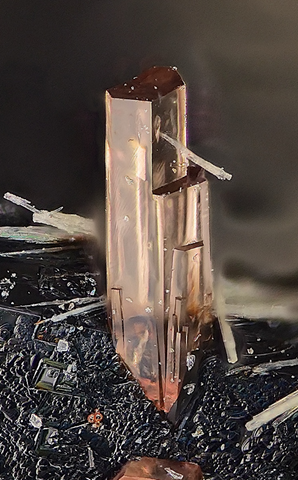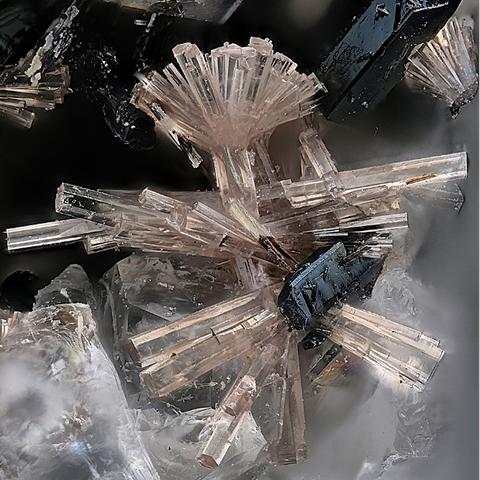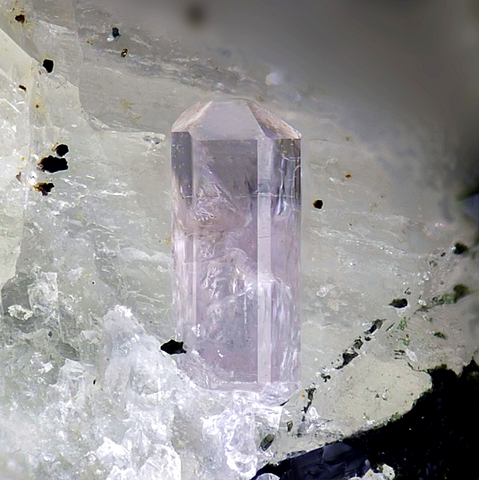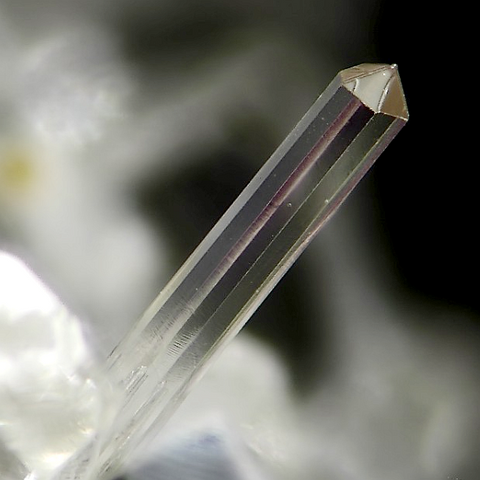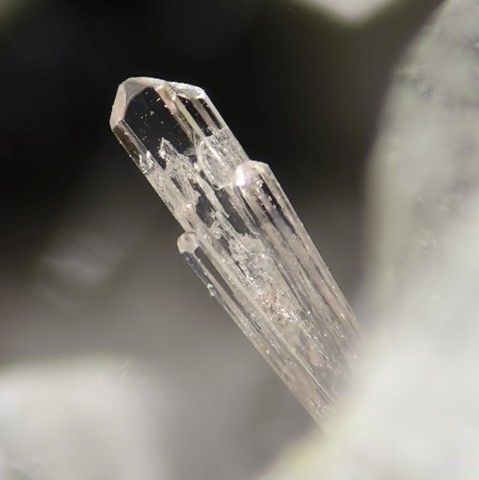 Britholite - Encyclopedia
Britholite - Encyclopedia
Class : Phosphates, arsenates, vanadates
Subclass : Anhydrous phosphates
Crystal system : Hexagonal
Chemistry : (Y,Ca)5(SiO4,PO4)3(OH,F)
Rarity : Rare
Britholite is a group of 3 minerals : britholite-(Ce), britholite-(La) and britholite-(Y) named after the dominant rare earth element. They are complex silicates in which a number of SiO4 tetrahedra are replaced by PO4 tetrahedra. Their names come from the Greek brithos (weight) because of their high densities. These are minerals that are found in pegmatites where they occur in stocky hexagonal prismatic crystals, frequently metamict, hardly reaching 1 cm (although giants of 20 cm are known), and in flattened centimetric masses. They are also found in microcrystals in the vacuoles of certain alkaline lavas. Britholite-(Y) is dark red-brown to black, sometimes light brownish, colorless, bluish or purple, it can alter into bastnäsite or churchite. Britholite-(Ce) can also be pink or green.
Main photo : Fluorbritholite-(Ce) from the In den Dellen quarry, Mendig, Germany © Volker Betz
Brewsterite in the World
Twinning
No twin known for this mineral species.
Fakes and treatments
No fake recorded for this mineral species, but difficult to identify without chemical analysis.
Hardness : 5
Density : 4.35
Fracture : Irregular
Trace : White to brown
TP : Translucent to transparent
RI : 1.730 to 1.752
Birefringence : 0.002
Optical character : Uniaxial -
Pleochroism : Visible
Fluorescence : None
Solubility : Nitric acid and hydrochloric acid
Magnetism : None
Radioactivity : None

